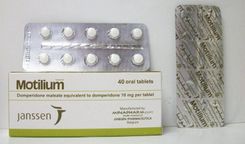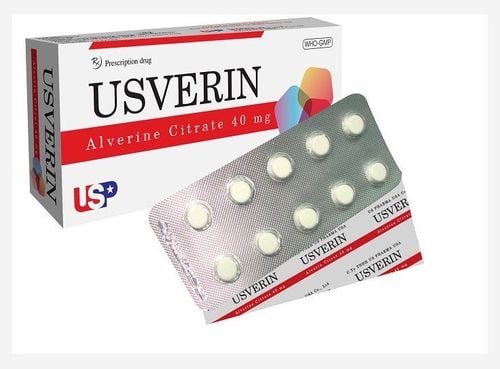Phloroglucinol is used to treat the symptoms of pain caused by dysfunction of the digestive tract, biliary tract, urinary tract and uterine pain.
1. What is Phloroglucinol?
Phloroglucinol is a digestive tract drug with antispasmodic effects, used in the following cases:
- Treatment of pain symptoms related to functional disorders of the digestive system and biliary tract;
- Treatment of acute pain due to urinary tract spasms: Renal colic;
- Treatment of pain symptoms due to spasms in gynecology;
- Supportive treatment of spasms during pregnancy combined with rest.
Contraindications of Phloroglucinol:
- Phloroglucinol is contraindicated in patients with a history of hypersensitivity to the ingredients of the drug, functional ileus, intestinal obstruction.
Drug form:
- Film-coated tablets;
- Injection solution;
- Injection.
Pharmacodynamics (Mechanism of action):
- Phloroglucinol directly inhibits voltage-dependent calcium channels on smooth muscle cells, leading to antispasmodic and visceral analgesic effects, especially in acute pain.
Pharmacokinetics:
- Absorption: The drug is rapidly and widely absorbed orally. Peak plasma concentrations are achieved within 15-20 minutes after oral administration. The extent of absorption is dose-dependent and is not affected by food.
- Metabolism: The drug is metabolized in the liver by glucuronidation.
- Distribution: There is no data showing that the drug is distributed into body tissues or crosses the blood-brain barrier.
- Excretion: The drug is excreted mainly through the kidneys in the form of glucuronide conjugates and a small amount in the feces in free and conjugated forms. The half-life of the drug is about 1 hour 40 minutes.
2. Dosage and how to use Phloroglucinol
Dosage in adults:
- Oral medicine: Take 2 tablets of 80 mg when in pain. Take 2 more tablets if spasms persist. Maximum 3 times a day (total of 6 tablets);
- Sublingual medicine: Place 1 tablet each time, maximum 3 tablets / day, at least 2 hours apart between each use;
- Injection medicine: Initial dose: 1 - 3 tubes / day, intravenous or intramuscular injection. Maintenance dose: Switch to oral form with a maximum dose of 6 tablets / day or suppository form 3 tablets / day.
Dosage in children:
- Children 12 years of age and older: Take 1 tablet of 80 mg x 2 times / day;
- Children over 2 years of age: The usual dose is 1 tablet of 80 mg, taken when in pain and can be repeated in case of severe spasms, at least 2 hours apart between each dose. Maximum dose not to exceed 2 tablets every 24 hours.
3. Side effects of Phloroglucinol
This drug rarely causes serious allergic side effects, however, patients still need to monitor the body's side effects when taking the drug such as hives, rash, Quincke's edema, arterial hypotension, and even drug shock to promptly contact the doctor.
- Common side effects: Patients will often experience common side effects such as rash;
- Rare side effects: Hives, angioedema, hypotension, anaphylactic shock;
- Unknown frequency: Red scaly rash with subcutaneous nodules and blisters accompanied by fever at the beginning of treatment (acute generalized exanthematous pustulosis).
4. Notes when using Phloroglucinol
- General notes: Patients should not use Phloroglucinol in combination with drugs or medicinal herbs containing Morphine compounds and derivatives because they antagonize the antispasmodic effect, reducing the effect of Phloroglucinol.
- Note for pregnant women: Animal studies have not demonstrated any teratogenic effects of Phloroglucinol. To date, the relatively widespread use of Phloroglucinol in clinical practice has shown no risk of teratogenicity. However, epidemiological studies are needed to determine that there is no risk when using Phloroglucinol. Therefore, Phloroglucinol should only be used during pregnancy when absolutely necessary, as prescribed by a doctor.
- Note for breastfeeding women: Because there is not enough safety data, this drug should not be used in breastfeeding women.
- Notes on driving and operating machinery: No or negligible influence on the ability to drive and operate machinery.
5. Treatment of overdose and missed dose of Phloroglucinol
Overdose and toxicity:
- Overdose cases have been reported but there are no specific symptoms.
- Overdose treatment: Patients should be taken to the nearest medical facility for timely treatment.
Missed dose and treatment:
- If you forget to take a dose, take it as soon as possible when you remember. However, if it is close to the next dose, skip the missed dose and take the next dose at the scheduled time. Do not double the prescribed dose.
In general, Phloroglucinol is used to treat symptoms of pain due to dysfunction of the digestive tract, biliary tract, urinary tract and uterine pain. Store the medicine at a temperature not exceeding 30 degrees Celsius, avoid direct light and excessively humid storage during use.
Please dial HOTLINE for more information or register for an appointment HERE. Download MyVinmec app to make appointments faster and to manage your bookings easily.













